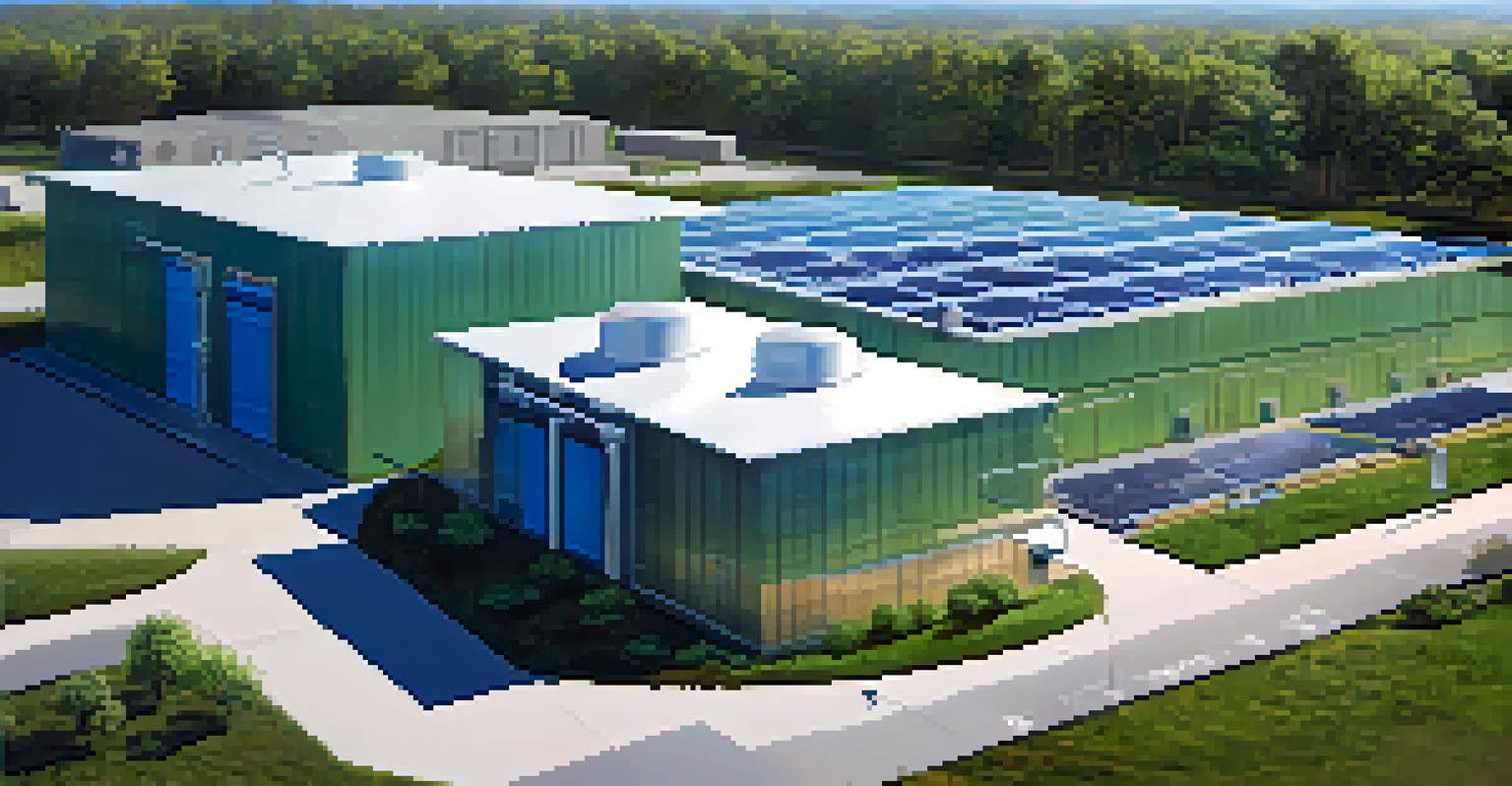Access to Clean Water: California's Public Health Focus

The Importance of Clean Water for Public Health
Access to clean water is a fundamental human right, essential for maintaining public health. It plays a crucial role in preventing waterborne diseases and promoting overall well-being. In California, where diverse communities and ecosystems thrive, clean water access is particularly vital in safeguarding health and ensuring sustainable living.
Water is the driving force of all nature.
When clean water is scarce, it can lead to serious health issues such as gastrointestinal infections, cholera, and even long-term chronic conditions. Communities that lack reliable water sources often face elevated health risks, which can strain local healthcare systems. This reality underscores the urgent need for a comprehensive approach to water access in California.
Moreover, clean water is not just about drinking; it's also essential for sanitation, food preparation, and hygiene practices. Ensuring that all Californians have access to safe water sources is a priority for public health officials, as it directly impacts quality of life and community resilience.
Current Challenges in California's Water Supply
California faces a myriad of challenges regarding water supply, exacerbated by factors like drought, climate change, and population growth. The state's diverse geography means that some areas experience water scarcity while others have abundant resources. This uneven distribution creates disparities in access, particularly for marginalized communities.

Drought conditions have become more frequent and severe, leading to water shortages that affect agricultural, urban, and rural areas alike. These shortages not only threaten crops and livelihoods but also limit the availability of clean drinking water. As a result, many communities find themselves in a precarious situation where their health and safety are compromised.
Clean Water is a Human Right
Access to clean water is fundamental for public health and is vital for preventing diseases and ensuring community resilience.
Compounding these challenges are aging infrastructure and contamination from pollutants, which can further hinder access to clean water. Communities, especially those in low-income areas, often struggle to advocate for necessary repairs and improvements, leading to a cycle of disadvantage that is hard to break.
California's Legislative Efforts for Clean Water
In response to the pressing need for clean water access, California has implemented various legislative measures aimed at improving public health. Laws such as the Human Right to Water Act have established a framework for ensuring that all residents have access to safe drinking water. This act emphasizes the importance of water as a basic human right and sets clear goals for state agencies.
The health of our waters is the principle measure of how we live on the land.
Additionally, recent bills have focused on funding for infrastructure improvements and contamination cleanup, particularly in disadvantaged communities. These efforts aim to rectify historical inequities in water access that have disproportionately affected low-income and marginalized populations. By prioritizing these communities, California is taking significant steps towards equitable water access.
Moreover, state officials are working on enhancing water quality standards and monitoring systems to ensure that contaminants are kept in check. This proactive approach is crucial in maintaining public health and fostering trust among residents regarding their water supply. As these policies evolve, they reflect California's commitment to safeguarding its citizens' health.
Community Initiatives Promoting Clean Water Access
Beyond legislative efforts, grassroots initiatives play a pivotal role in addressing clean water access in California. Local organizations often partner with state agencies to provide education and resources to communities facing water challenges. These initiatives aim to empower residents to advocate for their rights and ensure they have access to safe water.
Community-led water projects, such as rainwater harvesting and well monitoring programs, are increasingly gaining traction. These projects not only improve local water supply but also foster a sense of ownership and responsibility among community members. By involving residents in the process, these initiatives create sustainable solutions that can adapt to local needs.
Challenges from Drought and Inequality
California faces significant water supply challenges due to drought, climate change, and disparities that affect marginalized communities.
Additionally, public awareness campaigns are essential in highlighting the importance of clean water and engaging citizens in conservation efforts. By educating the public on water management and pollution prevention, communities can work together to protect their water sources and promote healthier environments.
The Role of Technology in Water Management
Technology is becoming an invaluable ally in California's quest for clean water access. Innovations in water purification, filtration, and monitoring systems allow for more effective management of water resources. These technologies help identify contaminants, assess water quality, and ensure that supplies meet health standards.
Smart water systems, which utilize sensors and data analytics, enable real-time monitoring of water usage and quality. This information can help municipalities respond quickly to issues, reducing the risk of contamination or supply shortages. By harnessing the power of technology, California is better equipped to manage its complex water challenges.
Furthermore, mobile applications that provide users with information on water quality and conservation tips are empowering individuals to take action. By promoting awareness and responsible water usage, these technologies contribute to a culture of sustainability that benefits both people and the environment.
Partnerships for Sustainable Water Solutions
Collaboration is key to addressing California's water challenges effectively. Partnerships between government agencies, non-profit organizations, and local communities are essential in fostering sustainable water solutions. These collaborations leverage resources, expertise, and community insights to create impactful programs that prioritize clean water access.
For instance, state agencies often work with local water districts to implement conservation measures and infrastructure improvements. These partnerships ensure that the unique needs of each community are taken into account, leading to tailored solutions that can adapt to changing conditions. By joining forces, stakeholders can maximize their efforts and create a more resilient water system.
Community Efforts Drive Change
Grassroots initiatives and partnerships are crucial in promoting clean water access and fostering sustainable solutions in local communities.
Additionally, partnerships with academic institutions and private companies can drive innovation and research into new water management strategies. By exploring emerging technologies and best practices, California can stay ahead of the curve in its pursuit of clean water access for all residents.
Looking Ahead: The Future of Water Access in California
As California continues to grapple with water access issues, the future holds both challenges and opportunities. Ongoing climate change impacts will require adaptive management strategies to ensure that all communities have access to clean water. By prioritizing resilience and sustainability, the state can better prepare for the uncertainties ahead.
Furthermore, continued investment in infrastructure and community engagement will be crucial. As California's population grows, the demand for clean water will only increase. By fostering a culture of conservation and responsible usage, residents can contribute to a more sustainable future for their water resources.

Ultimately, California's commitment to clean water access reflects a broader understanding of public health and environmental justice. By working together, stakeholders can create a future where every Californian has the right to safe, clean water—a foundation for thriving communities.